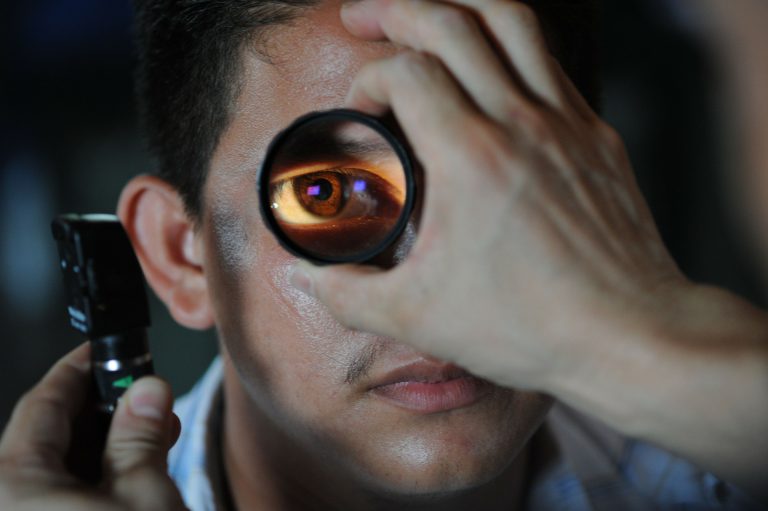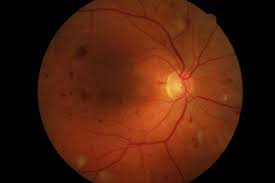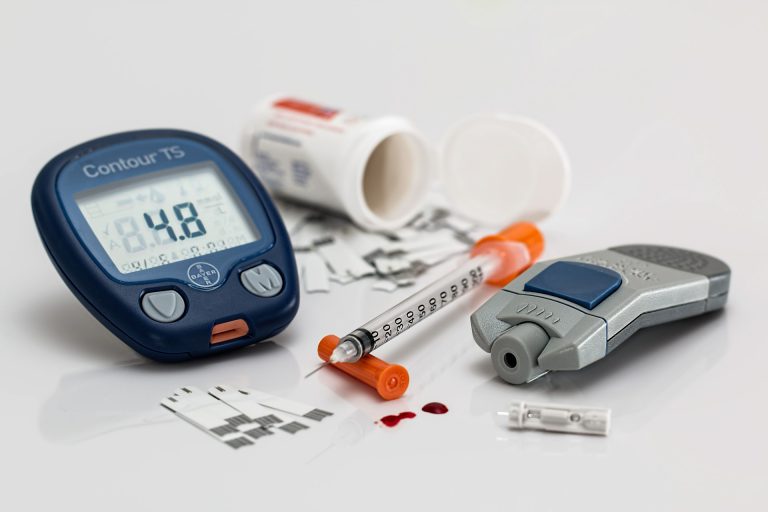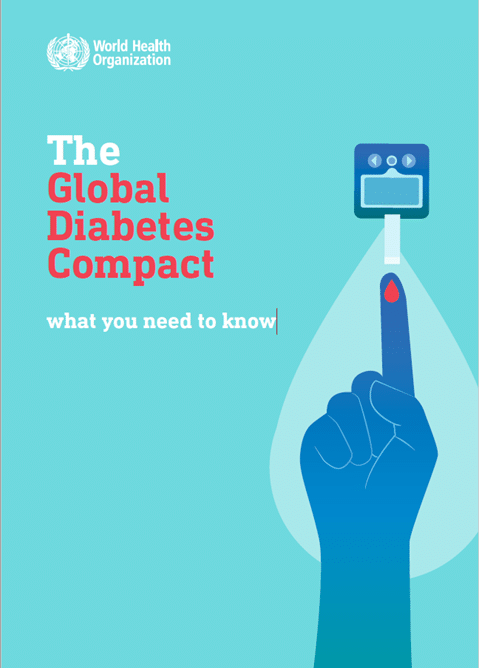How Many People Go Blind From Diabetes?
Blindness is one of the severe complications of diabetes and knowing how many people can actually go blind due to diabetes is a global concern. Diabetes is in fact one of the leading causes of blindness in the world today. This is particularly true for the global working-age population between 20 and 70 years old. Diabetic blindness is a growing problem due to the rise of diabetes and the aging global population.
According to the International Diabetes Federation, there are currently 145 million people with diabetic retinopathy and 45 million with sight-threatening diabetic retinopathy. These numbers are expected to exceed 224 million and 70 million respectively by 2040.
The good news is that the risk of diabetic blindness can be reduced by 95% with early detection, timely treatment, as stated by the American National Eye Institute.
Below, we briefly describe how diabetes affects your eyes. We also examine whether all diabetic patients are at risk of vision loss and how it can be prevented.
How does diabetes affect your eyes?
Diabetic retinopathy is one of the most common long-term complications of diabetes. It
occurs when diabetes damages the blood vessels in the retina at the back of the eye.
The retina is made of a layer of light-sensitive cells that convert light into signals for the brain. The signals are sent to the brain through the optic nerve. The retina converts the light rays entering the eyes into visual signals to form an image. When the retina is damaged due to diabetes, this sense of vision is hampered. This results in vision impairment and eventual blindness.
Over time, uncontrolled blood glucose levels can cause damage to the blood vessels in the retina. The increased blood sugar levels damage the tiny capillaries and blood vessels supplying oxygen and other nutrients to the retina. Too much sugar in the blood can block the tiny blood vessels that nourish the retina, cutting off its blood supply. As a result, the eye attempts to grow new blood vessels to make up for the blocked ones. However, these new blood vessels are abnormal and grow into the vitreous gel, where they may leak or bleed.
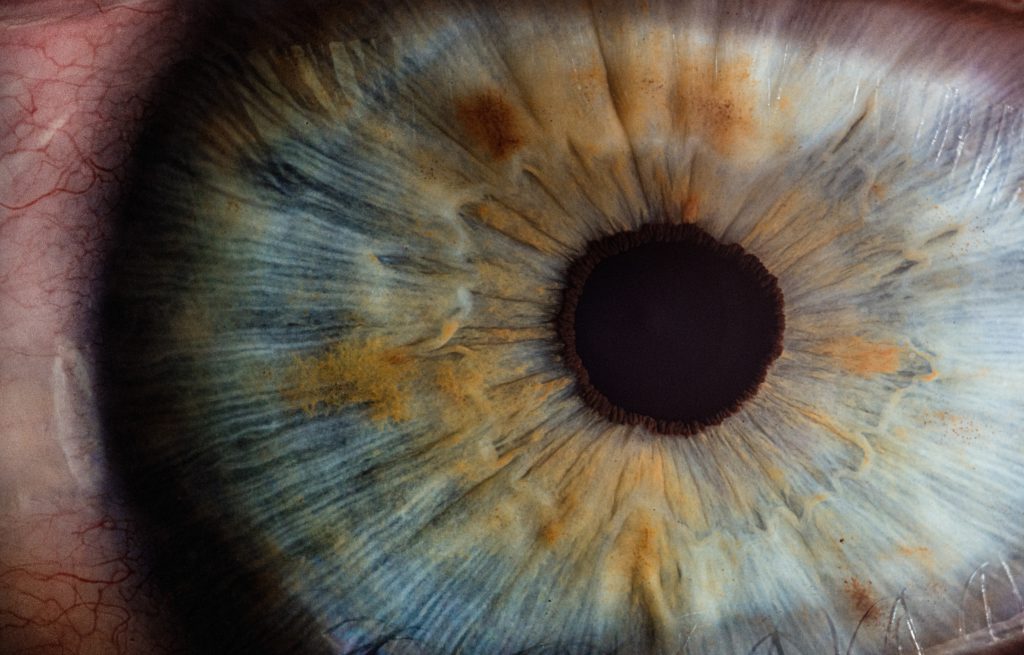
The damage to the retina can cause a loss of vision in the affected eye through two mechanisms as explained below:
- Non-proliferative diabetic retinopathy (NPDR) is the earliest stage of diabetic retinopathy. In this case, new blood vessels aren’t growing or proliferating. The walls of the blood vessels in the retina are weaker. Tiny bulges (microaneurysms) and small hemorrhages form, which appear as red spots on the fundus of the eye. This condition can progress from mild to severe, as more blood vessels become blocked. Nerve fibers in the retina may begin to swell, possibly resulting in the central part of the retina (macula) to swell (macular edema).
- Proliferative diabetic retinopathy is a more severe type of diabetic retinopathy. Here, the damaged blood vessels close off. The retina responds by growing new blood vessels that are often abnormal and can leak into the vitreous. The vessels are often accompanied by scar tissue that may cause the retina to detach from the back of the eye. If the new blood vessels interfere with the normal flow of fluid out of the eye, pressure may build up in the eyeball, which can damage the optic nerve that carries images from your eye to the brain.
Are People with Diabetes at A Risk of Diabetic Retinopathy and Going Blind?
Every person with diabetes is at risk of developing diabetic retinopathy. This includes people with type 1, type 2, and gestational diabetes (diabetes during pregnancy).
The duration of diabetes plays a role in determining the extent of the risk. Patients who have had diabetes for longer are more prone to develop retinopathy. Other well established risk factors, include persistent high blood sugar levels, high blood pressure and high cholesterol levels.
Ethnicity seems to be a complex, independent risk factor for diabetic retinopathy. Some ethnic groups appear to be more affected of diabetic retinopathy than others. Several studies indicate, for example, that the prevalence of diabetic retinopathy is higher in people of South Asian, African, Latin American, and indigenous tribal descent compared to the white population. Alaska Natives and Pacific Islanders may also be at greater risk of losing vision due to diabetes. In a population-based, cross-sectional study in Singapore, Indian Singaporeans seemed to have a higher prevalence of diabetic retinopathy compared with Chinese and Malays.
Women who have diabetes can quickly develop eye problems during pregnancy. For those who already have some diabetic retinopathy, it can deteriorate during pregnancy. Changes that help your body support a growing baby may put stress on the blood vessels in your eyes. Every pregnant woman with diabetes should have a comprehensive dilated eye exam as soon as possible to protect their vision. Diabetes that occurs only during pregnancy, called gestational diabetes, does not usually cause eye problems. Researchers are yet to conclude why this is the case.

What Percentage of People With Diabetes and Diabetic Retinopathy Go Blind?
According to the International Diabetes Federation (IDF), around a third of the global diabetes population of 463 million will develop some form of eye health complication that could have devastating and wide ranging social and economic impact if left untreated. The IDF estimates that 224 million people will have diabetic retinopathy and 70 million will have sight-threatening diabetic retinopathy by 2040.
Nearly 98% of patients with type 1 diabetes and 78% with type 2 diabetes are expected to develop minimal retinal damage after having diabetes for more than 15 years. Some studies suggest that around 17 million worldwide have proliferative diabetic retinopathy and without treatment over half of the patients with high-risk proliferative diabetic retinopathy will go blind within 5 years.
Though most patients with diabetes suffer from a varying extent of vision impairment, only about 5% of them develop severe vision loss. While this may not seem like a high number, bear in mind that the global diabetic population is expected to reach 700 million by 2045, according to the IDF, meaning 35 million people could go blind!
What Age and People Are The Most Likely to Go Blind From Diabetes?
Diabetic retinopathy is the most common cause of blindness in patients between the ages of 20 and 70 years. The prevalence of diabetic blindness and vision impairment increases rapidly with the duration of diabetes.
Sight-threatening diabetic retinopathy is rare in type 1 diabetic patients in the first 3–5 years of diabetes or before puberty. During the next two decades, nearly all patients with type 1 diabetes develop retinopathy. According to the American Diabetes Association, up to 21% of patients with type 2 diabetes have retinopathy at the time of first diagnosis of diabetes. Most of them can expect to develop some degree of retinopathy over time.
The risk of developing diabetic retinopathy before the age of nine is generally considered to be low. In the UK, researchers have concluded that diabetic retinopathy screening for patients younger than twelve years old was not necessary. In the US and many European countries, the guidelines suggest that eye screening from the age of eleven, while in Scandinavia screening begins when patients enter puberty.
What Symptoms of Diabetic Retinopathy Should I Look Out For?
Diabetic retinopathy tends to progress slowly over a period of time often without causing any symptoms. Patients are generally asymptomatic during the initial stages of diabetic retinopathy. In rare cases, people experience a sudden onset of blindness, without any symptoms and no mild vision problems at first.
Patients with severe and irreversible retinal damage may develop a few symptoms such as:
- Pain in the eye
- Blurring of vision, which does not improve even with glasses
- Alternative worsening and improvement of the vision
- Seeing spots, cobwebs, or a hole in the field of vision
- Sudden loss of vision, especially after events like coughing and sneezing
You can read more in our recent blog on how is Diabetic Retinopathy is diagnosed and treated.
How Can I Reduce My Risk of Diabetic Retinopathy?
There are several ways to prevent vision loss due to diabetes. Keeping your blood sugar levels within the recommended target range is of outmost importance. Good control of your blood pressure and cholesterol levels can also reduce the risk of vision loss.
Active lifestyle and adopting healthy dietary habits is another key to good diabetes care and prevention of diabetes complications like diabetic eye disease. Having your eyes checked on a regular basis is crucial for early detection of diabetic retinopathy.
In a recent blog we included several tips on how to prevent diabetic retinopathy.
How to Cope With Vision Loss From Diabetes?
It can be especially distressing to recieve a diagnosis of diabetic retinopathy as it raises fears about vision loss or going completely blind. People may view the new diagnosis as a setback in their efforts to manage their diabetes. The distress may be further fuelled by a lack of useful information about appropriate care of diabetic retinopathy and treatment options.
People with diabetes who have lost their eyesight, can continue to live an independent and full life. It is important to know where to go for useful information about living without vision. An example of a such a publication is “Bridging the Gap – Living with Blindness and Diabetes” that focuses on nonvisual methods of managing diabetes.
In some cases, the necessary equipment has been adapted for the blind, for example, talking glucose and blood pressure monitors, count-a-dose insulin measuring devices, talking scales, and tactile tools to measure food. By using alternative techniques and products, blind people can control their diabetes in an effective way.
Conclusion
It is a sad fact that diabetes continues to be one of the leading causes of preventable blindness in the world. Fortunately, there are effective ways to prevent vision loss with early detection and timely treatment. Advancements in technology have also allowed for a significant improvement in the management of diabetes-related vision loss, making the lives of millions around the world more bearble.





